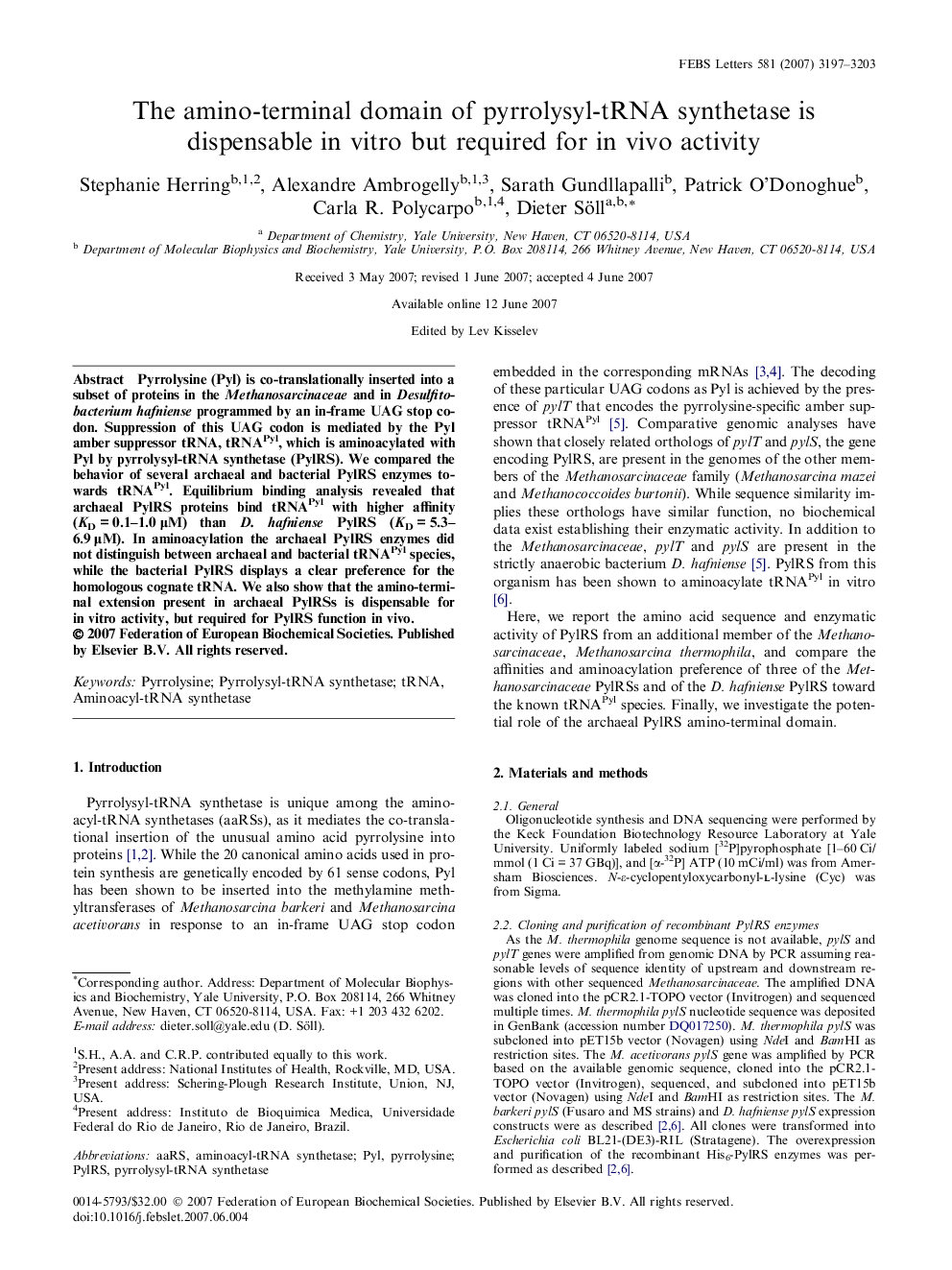| کد مقاله | کد نشریه | سال انتشار | مقاله انگلیسی | نسخه تمام متن |
|---|---|---|---|---|
| 2050738 | 1074180 | 2007 | 7 صفحه PDF | دانلود رایگان |

Pyrrolysine (Pyl) is co-translationally inserted into a subset of proteins in the Methanosarcinaceae and in Desulfitobacterium hafniense programmed by an in-frame UAG stop codon. Suppression of this UAG codon is mediated by the Pyl amber suppressor tRNA, tRNAPyl, which is aminoacylated with Pyl by pyrrolysyl-tRNA synthetase (PylRS). We compared the behavior of several archaeal and bacterial PylRS enzymes towards tRNAPyl. Equilibrium binding analysis revealed that archaeal PylRS proteins bind tRNAPyl with higher affinity (KD = 0.1–1.0 μM) than D. hafniense PylRS (KD = 5.3–6.9 μM). In aminoacylation the archaeal PylRS enzymes did not distinguish between archaeal and bacterial tRNAPyl species, while the bacterial PylRS displays a clear preference for the homologous cognate tRNA. We also show that the amino-terminal extension present in archaeal PylRSs is dispensable for in vitro activity, but required for PylRS function in vivo.
Journal: FEBS Letters - Volume 581, Issue 17, 10 July 2007, Pages 3197–3203